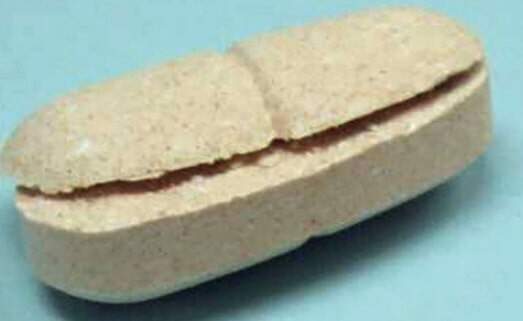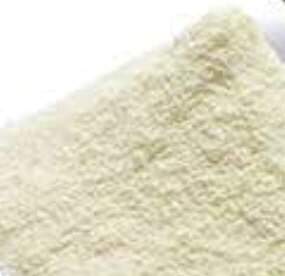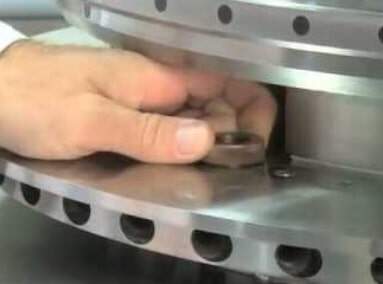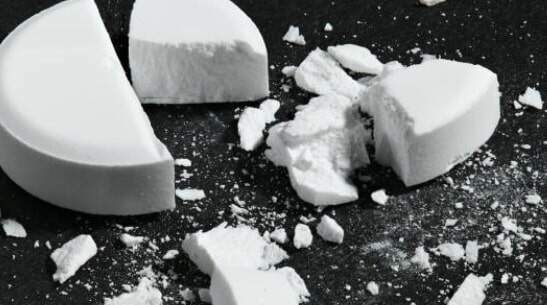Tablet Press Troubleshooting Guide
Like any other machine, there would be some problems occurring with tablet press through irregular operation or long-term use. In fact, most of which can be easily solved as long as you know the cause.
However, few users care about the rules in manipulating the tablet presses. According to the statistics, only one third of users read the manual of tablet presses before operation. This urges us to get well trained before operating tablet presses.
To make us professional in running and mending tablet presses, we need to know the working principle of tablet compression machines first. We’ll discuss the tablet press troubleshooting in the following aspects.
Capping

Capping happens when the compression stage has just finished. When the upper punch moves up guided by the upper cam, the tablet under the punch cracks on its top. This is capping.
The air trapped inside the die cavity might be the cause of capping. Taking rotary compressing machine as an example, there is a pre-compression stage before main compression. In the pre-compression stage, the punches squeeze out the air inside the powder.
It’s not just the air flowing from the die cavity, but the dry powder as well. The tiny dry powder is supposed to come out with the air. This tiny powder won’t do any harm most of the time.
Somehow, some powder get to the place near the line of air (the place air come out in pre-compression). When the compression is over, the air comes inside, and the unattached powder blocks in the tablet, bringing it apart.
If the expelling of air is thorough during the pre-compression, it’s less likely capping would happen. This means we can reduce the risk of capping by lengthening the dwell time.

Another probable reason to capping is the mixture of raw material doesn’t fit the request of compression. In our last blog, we introduced the preparation before raw materials are added into the feeder.
The tablet compression machine cannot compress dry powder into tablets directly. Thus, the first step in most procedures of tablet manufacture is granulation. Put into a fluid bed granulator or a mixing machine, the active ingredient is fully mixed with the excipient.
After the drying process, the mixture goes to the feeder. The excipient in the mixture holds the active material together as granules, and granules combines together as tablets after compression. The more dry powder is inside the granules, the more risky the tablets go capping.
The matter with the granules has several possibilities. On top of the lacking water, the binder (or excipient) may not fix the active ingredient. Capping may also occur when the mixture is not properly mixed.
Lamination

Lamination is quite like capping, except the crack happens elsewhere. This problem occurs mostly because of the over compression. It stops the granules from combining together.
Either reducing the thickness of the tablets or lengthen the dwell time can lower the risk of lamination. The pre-compression is one way to give the granules longer dwell time. The dies also matters in reducing lamination. According to research, using tampered dies can avoid lamination.
Capping and lamination are caused by similar problems. Their solutions are as follows.
Pre-compression expels the air from the granules as well as the tiny powder in between. It also provides longer dwell time, allowing granules closely attach to each other.

Slowing down the speed of compression seems to lower the efficiency of production. In fact, the loss caused by lengthening the dwell time is pretty low comparing to the unsatisfying quality of tablets.
The depth of punch heads in pre-compression can be shallower than in main compression. This allows the air to be released more thoroughly. The design of dies also helps to expel the air. Adding a tamper on the top of die and changing the depth of dies are two common countermeasures to capping and lamination.
Sticking and picking

When granules stick on the punch heads, sticking happens. The granules come into the logo parts of the tablets, causing picking. Sticking and picking result in flawed tablets. Most manufacturers check the quality of tablets in visual way.
Clearly, we don’t have much time to waste on examining the tablets with our eyes pill by pill. What’s more, the cost of delay in bulk production is immeasurable. Therefore, proper operation during the whole compression procedure is fairly essential.
The sticking and picking usually take place because of incomplete drying treatment. During granulation, both binder and active material are wet. If they are not dry enough after drying, the granules will remain wet inside. The granules would stick to the punch heads.
The wet granules inside the tablets also challenge their preservation. They might crack or go bad at any time.
Pre-compression seems to be a general method in tablet press troubleshooting. The granules need time to bind together. The adjustment of pressure also prevents the arising of sticking and picking. In a word, sticking and picking is avoidable as long as you know the nature of material.

Other ways to stop sticking and picking focus on the tablet press tooling system. The punch head is where sticking and picking take place. Polishing the punch head regularly would keep it smooth, unable for granules to stick on.
Electroplating metals (aluminum or other metal compound) onto the surface of punch heads also have the same effect. As for the die cavity, lubrication is effective in preventing the problems.
Tablet hardness
The hardness of tablets is an essential feature. If they are too soft, there would be problems in packing, storing and coating. All these problems are not acceptable in pharmaceutical industry.

Wrapping up
Pre-compression and adding dwell time are most effective tablet press troubleshooting methods. To get more information about tablet press troubleshooting, please contact us. IpharMachine is always here ready to help. We have professional team with 17 years of experience in the pharmaceutical industry.
Leave your comment
Comments
we have an issue in STC-ZPK100 tablet press machine.
after plugging the power and turing on the switch, there is an error written "no communication with the CPU, please check cable,module, or CPU"
what shall we do??
From: kasra | Created on: 10/18/2023 12:43 AM
Also Offers


Containment Automatic Capsule Filling Machine SFK-703

Fully Automatic Dosator Capsule Filling Machine CZ-40

Our Team
As an expert in the pharmaceutical and pharmaceutical packaging industry, iPharMachine has provided solutions for hundreds of pharmaceutical and health product manufacturers for 17 years. By visiting customers, we get good reviews from our customers.
- info@ipharmachine.com
- English Español Deutsche







